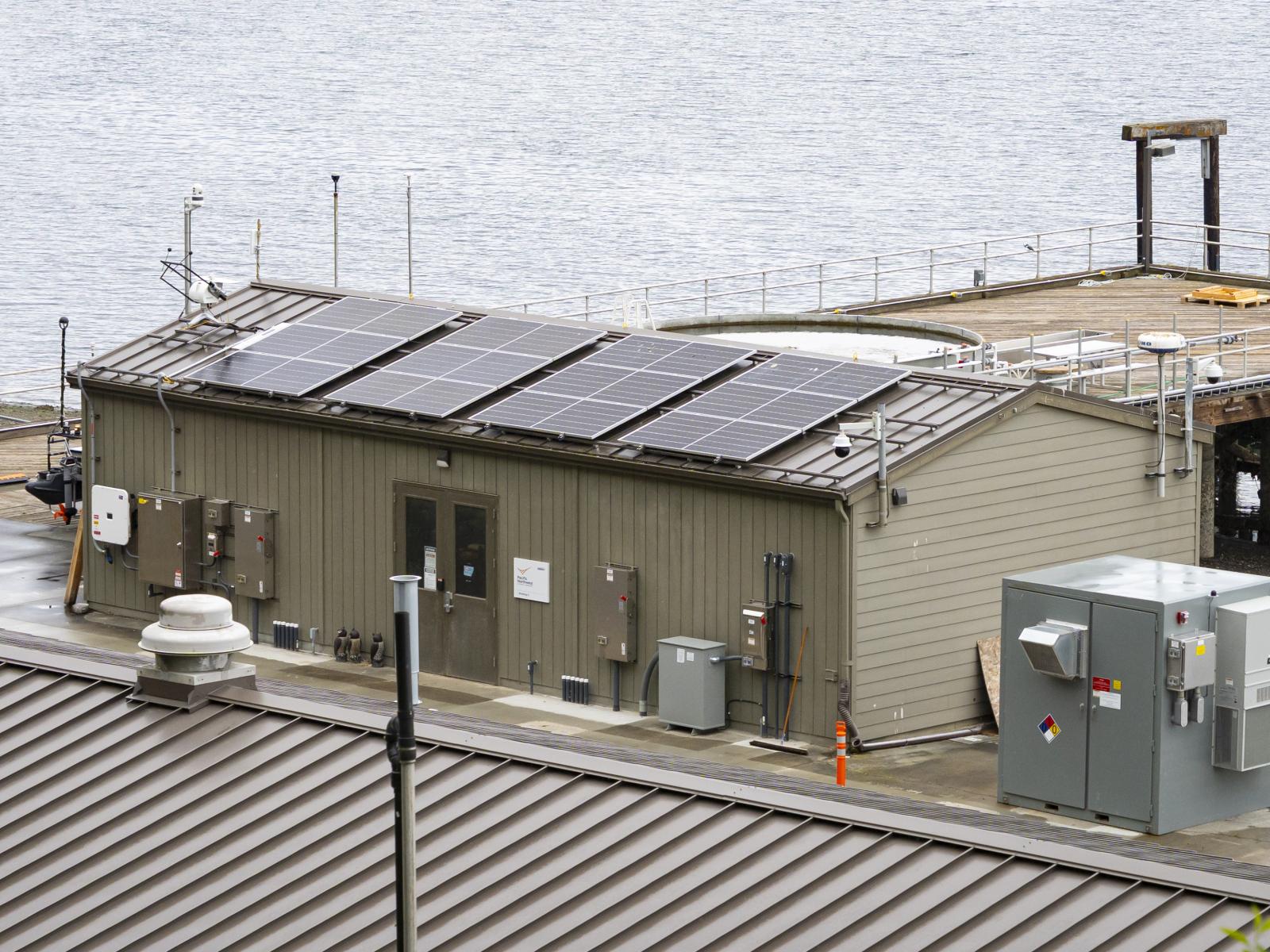Microgrid Testing for Coastal Energy Resilience
Microgrid Testing for Coastal Energy Resilience
Testing of electricity generation and storage at a microgrid scale

Solar panels on top of a PNNL-Sequim building, with a battery energy storage system to the right of the building.
(Photo by Shanon Dell | Pacific Northwest National Laboratory)
